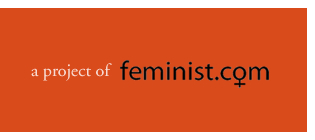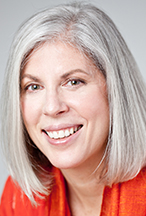 |
 |
Spiritual Activism Activism from the Heart
of Paradox < back to Spiritual Activism main page
Principle 6. Paradox and Mystery We accept paradox and mystery, which allows us to see that the truth can be ambiguous, complex, contradictory, or unknowable. This, in turn, relieves us from the need to always classify into either/or, right and wrong. "Compassionate action starts with seeing yourself when you start to make yourself right and when you start to make yourself wrong. At that point you could just contemplate the fact that there is a larger alternative to either of those, a more tender, shaky kind of place where you could live." - In the Gap Between Right and Wrong, Pema Chodron On one of our first dates my husband and I went to dinner at a Chinese restaurant and ordered moo shu vegetables with pancakes. He said “let’s be sure to order the plum sauce.” I corrected him smugly, “its hoisin sauce, not plum sauce!” We argued spiritedly about who was right and who was wrong, each describing the qualities of the sauce we thought accompanied the dish. When we asked the waiter to settle the dispute, he said, “you are both right and both wrong. It’s known by two names, plum sauce and hoisin sauce.” We were working from our Western, logic based, “either/or” paradigm, where opposites such as right and wrong are understood to be mutually exclusive ends on a linear continuum. The idea that we could both be thinking differently about the same thing did not occur to us. While it was a frivolous debate, unlike whether Jerusalem is the spiritual homeland to the Israelis or Palestinians, our response to each other captured the Western habit of living in a conceptually binary world. In contrast, in the East, as in many indigenous cultures, opposites are not seen as mutually exclusive but instead are considered to be connected parts of an integrated whole. The well known yin/yang sign represents the idea that all things contain the seed of their opposite: light and dark, good and evil, life and death, right and wrong. Opposing forces are understood as making up an interdependent duality of “both/and,” in which one part cannot exist without the other. From the Eastern perspective, both forces cycle through stages of transformation and change together, and the best way to live in this world of paradoxical opposites is to always seek balance. Both the West and East contribute important aspects towards human understanding, and there is a growing effort across disciplines to find an integrative “third way” approach to solving the world’s most challenging problems. As Professor Chen said in his article “Transcending Paradox: The Chinese ‘Middle Way’ Perspective,” in the Asia Pacific Journal, by combining the best of Western analysis and Eastern integration (a balancing act in itself), we begin to create a new and more integrated composite, three-dimensional mental map of the world. Finding a third way is not the same as identifying the average difference between two polar positions. As said about the Chinese philosophy, the Middle Way, captures the idea of reconciling opposites through integration:
“If two extremes are pictured as the two ends of a horizontal line, then the Middle Way does not lie on that horizontal line itself, somewhere between the two ends, but in a point above the horizontal line. We may imagine that point linked to the two ends of the line, to form a triangle.” (http://www.teosofia.com/midway.html) The tip of the triangle represents a shift in our understanding to new ground and opens up opportunities for being more comfortable in the gray zone of life, which includes not knowing the answer, being right and wrong at the same time, and accepting mystery as an important part of our world. Letting go of the need to know everything to a certainty creates a dimension of space that is essential to solving problems.
A person can understand everything with the help of what he does not understand. The logician seeks to make everything clear, and only succeeds in making everything mysterious. The mystic allows a few things to remain mysterious, and everything else becomes clear. - Baltasar Gracian As activists seeking a more just world, one of our biggest challenges is to work towards justice in a way that doesn’t presume that we are the holders of ultimate truth and that recognizes the wholeness of the system within which we work. So often we advocate for things by being against other people’s truth, and not even seeing that there could be an element of truth in the opposing position. If we can deepen our ability to see overlapping truth and overlapping right and wrong, without surrendering our search for the truth or our quest for right action, then it will be easier to be empathetic and compassionate towards each other in the face of our differences. Embracing diversity in this way is key to working for justice, justly. There are many examples of on the ground efforts to apply this kind of third way approach, from peacemaking in conflict zones (see Search for Common Ground), to deescalating the abortion conflict in the US (see Public Conversations Project), to mediating labor and personal disputes (see CUNY Dispute Resolution Consortium). It is hard work, and success is slow in coming. In his book, A New Earth, best selling author Eckhart Tolle shares insight into the evolutionary nature of consciousness by imagining what it was like when flowers first emerged on earth:
The first flower probably did not survive for long, and flowers must have remained rare and isolated phenomena, since conditions were most likely not yet favorable for a widespread flowering to occur. One day, however, a critical threshold was reached, and suddenly there would have been an explosion of color and scent all over the planet—if a perceiving consciousness had been there to witness it. The seeding of a social change process based on integration, holism, and mutuality has already begun. We can help bring on the explosion of color and sweetness that comes from making peace peacefully by working with paradox and mystery differently in our daily lives. Below are some exercises to help you develop comfort living in the gray. Loosening Your Grip on All Right or All Wrong: The next time you find yourself convinced that you are right, when the heat of the moment has lost its fire, spend time contemplating what elements of the other side’s arguments might be true at the same time that your arguments are true. Can you find the seed of your argument’s opposite in your own argument and visa versa? How does this exercise make you feel? Acknowledging Complexity and the Gray Zone: Pick something that you feel very certain about and see if you can find the area of your own murkiness or uncertainty in it, and study how you react to that uncertainty. Can you allow your certainty and uncertainty to stand beside each other at the same time? What would you call that? Letting in “I Don’t Know” and Mystery: Spend ten minutes in quiet reflection on something you are struggling to understand. Be compassionate towards yourself for a lack of knowing and see if you can find the humor or relief in knowing that not knowing is an essential part of being human. Practice saying “I don’t know” whenever you realize you don’t know. Carla Goldstein, J.D., is Omega's Director of External Affairs and Director of The Women's Institute at Omega. Carla is an attorney with 20 years of experience in public interest advocacy and has worked extensively in city and state government on issues related to women's rights, poverty, public health and social justice. She has contributed to over 100 city, state and federal laws. Carla has appeared on local and national radio and television and makes public presentations to a wide range of audiences on issues related to women’s empowerment and activism. Prior to joining the Omega Institute, Carla was the VP for Public Affairsat Planned Parenthood of New York City where she directed the agency'sadvocacy and strategic communications work. She also served as the foundingdirector of the PPNYC Action Fund, the political arm of PPNYC. For eight years Carla was an adjunct professor at CUNY Queens College, where she taught, “Law and Social Justice,” a course designed to empower students to be effective advocates for progressive social change. As part of Omega’s Faculty, Carla teaches “Spiritual Activism,” a workshop designed to help people develop their activism in creative ways that align with their values and lives.

Founded in 1977, Omega is the nation's largest holistic learning center whose mission is provide innovative educational experiences that awaken the best in the human spirit, providing hope and healing for individuals and society. Every year more than 20,000 people attend workshops, retreats, and conferences on its 195-acre campus in the countryside of Rhinebeck, New York, and at other sites around the country. The Women’s Institute, a dynamic new component of Omega, is dedicated to empowering women around the world. It has grown out of the momentum created by the annual Women and Power conferences that Omega Institute has presented in partnership with V-Day since 2002. It seeks to sustain throughout the year the community and inspiration generated at the conferences. Women’s deep wisdom is essential to the creation of a more sustainable and loving culture in every facet of life, from the personal to the political. The Women’s Institute provides opportunities for women and men to inspire and strengthen their visions and authentic voices through unique learning and community building experiences. For more information, visit www.eomega.org.
|
||
Home | About Us | Features | Ask
Our Team | Inspiration
& Practice | Women of Vision | Resources
Copyright 2010 Feminist.com. All rights reserved.
